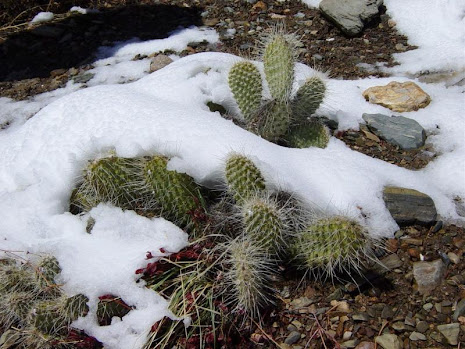 |
| Wikimedia Commons / CC |
I know it's been a while since I've written anything here, and the reasons are many, including the fact that we just haven't received as many SAR calls over the past several months as we did before that, during my five years and counting on the team.
And that's a good thing! It may be that more calls have been resolved by Sheriff's deputies before they've gotten to the point that the team was needed and/or perhaps fewer people have gotten into bad SAR-type situations recently... at least, in our area.
Whatever the case may be, my phone hasn't rung nearly as much with "SAR" showing up on the display.
But there have been missions, including some technical rescues I've not been able to respond to. I'm just not always allowed to write about the missions I'm involved with... unfortunately for me, being the prolific writer-type. So, I sometimes have to sit on my hands.
Suffice it to say, some of those missions haven't had happy endings like the one that just happened yesterday, when a seven-year-old boy who'd been missing since about 10 a.m. the day before was reunited with his family after an extensive search that included search and rescue teams from several counties, with ground-pounders, K9, and mounted units, jeep posses, and air support from DPS and the Air Force, along with the many locals who came out to help search. Cole Evans had spent a long, cold night alone "out there," under an abandoned trailer, so we learned when he was finally located around nine-something the next morning.
Here's an article about the search with a great photo of Cole's reunion with his dad: Missing Seligman Boy Found
All I can say is: YAY! What a huge relief. As I was searching through much of the night with my field team, I kept noticing the cold—at freezing or below with snow still on the ground among the pinion, juniper, and cactus—thinking about Cole and wondering if he was cold and scared. As we searched beneath trees and up in the branches, and under and inside abandoned vehicles and trailers, I kept hoping that someone would say over the radio that the boy been found. It didn't matter who found him of course—just that he was safe.
As my group debriefed back at Incident Command in the middle of the night, I looked over at the house Cole should be in, warm and safe. I saw the lights on and thought about what the family inside must be going through.
As my search partner and I drove away, talking to ward off the need for sleep after our shift, we saw lights of searchers' headlamps glimmering in the distance, the headlights from searchers' vehicles, red and blue flashing lights from law enforcement vehicles, lights in the sky from searching aircraft, and we wondered if Cole was seeing or hearing any of that.
Needless to say, I was so relieved to hear, later that morning after I'd gotten some rest and pulled prickly pear spines out of my socks, that Cole had been found, and that he was "fine" and eating snacks. I began to see the happy announcement posted all over social media, where people had been sharing search updates from the media and worrying together about the boy.
Thinking about recent missions that didn't have a similar outcome, this one left me with a very big smile and a happy heart. Let's hope the trend continues.














